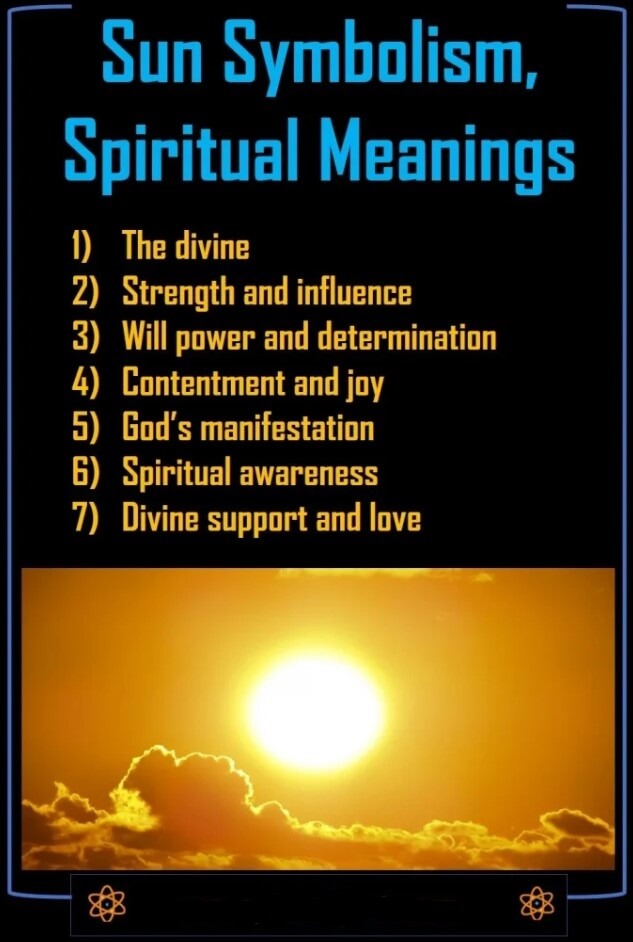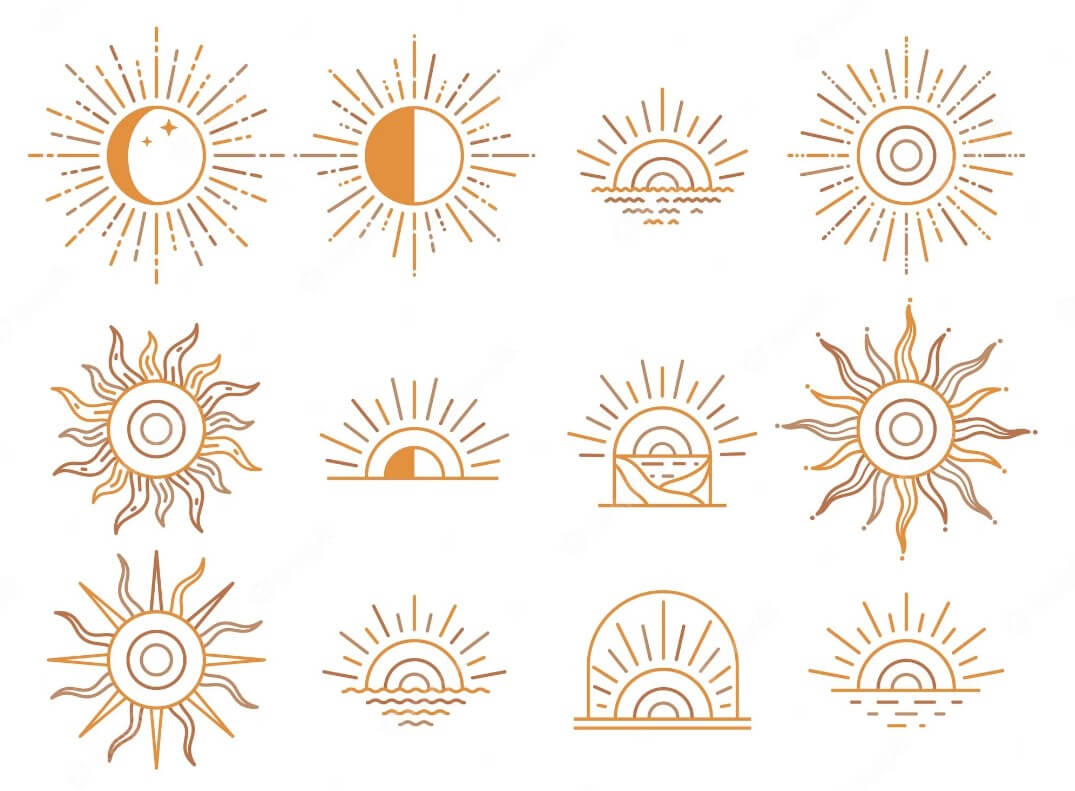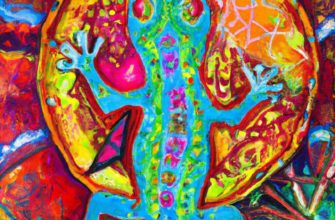To gain a comprehensive understanding of sun symbolism, explore the sub-section called “Explanation of sun symbolism.” Delve into the depths of this intriguing concept, delving into its various interpretations, cultural significance, and symbolic representations.
Explanation of Sun Symbolism

The sun holds profound symbolism across many cultures and beliefs. From power to vitality, enlightenment to life-energy; its radiant and transformative qualities have inspired awe and reverence.
The ancient Egyptians adored the sun as a symbol of their Sun God Ra. They celebrated its daily cycle in rituals and believed it moved across the sky in a boat during the day and journeyed through the underworld at night.
Hindus embody the sun as Surya, the solar deity. He’s seen as a physical entity and spiritual force. Surya is believed to be the source of light and knowledge, enlightenment and divine consciousness.
The Hopi Native Americans revere the sun as a powerful deity. It brings warmth, growth and abundance to their land. The sun’s movements determine their farming, ceremonies and festivals.
Sun symbolism also represents endurance, courage, vitality and renewal in mythologies all around the world. In Greek mythology, Apollo was linked to the sun and to music, healing, poetry and prophecy.
Exploring different perspectives of sun symbolism, it’s clear this celestial body still intrigues us. Its light serves as a reminder of our connection to nature’s cycles – a timeless force that impacts every aspect of life on Earth.
Historical and Cultural Significance

To gain insight into the historical and cultural significance of sun symbolism, delve into the sub-sections: “Sun symbolism in ancient civilizations” and “Sun worship and religious beliefs.” Explore how these topics contribute to a deeper understanding of the symbolic importance and reverence associated with the sun throughout history.
Sun symbolism in ancient civilizations
The sun held great importance to ancient civilizations. Its power, divinity, and the cycle of life were all represented in their art, architecture, religion, and rituals.
Let’s look at the table for a better understanding:
| Civilizations | Symbolic Meaning |
|---|---|
| Egyptian | Divine power and rebirth |
| Aztec | Life-giving force and agricultural fertility |
| Inca | Inti – the Sun God; giver of life and civilization |
| Greek | Helios – personification of the sun; source of light |
| Mayan | K’inich Ajaw – ruler of heaven and earth |
Beyond these, the Hindu Rigveda mentioned Surya as a deity of truth and light. The Japanese, meanwhile, worshipped the Sun Goddess, Amaterasu. This shows the widespread nature of sun symbolism in those cultures.
Unlock the secrets of the sun’s significance in our history! Take a journey into the past, where every dawn paints a new story of divine power and human strength.
Don’t miss out on this chance to learn more about our collective past. Use this opportunity for self-discovery and explore the intricate details of sun symbolism in ancient civilizations. Enjoy!
Sun worship and religious beliefs
The sun was an important part of many ancient religions, like Ancient Egyptian and Mayan. Ra was the sun god in Egypt and temples were built to honor him. The Mayans believed the sun gave them food, warmth, and light. El Castillo at Chichen Itza is a monument to their sun worship.
Indigenous cultures around the world used to worship the sun too. From Native Americans to African civilizations like Mali’s Dogon people, the sun was a sacred part of their cosmology.
Modern-day celebrations like Summer Solstice Festivals have roots in ancient sun-worshipping ceremonies. Stonehenge in Englad is aligned with the rising sun during solstices, a reminder of our ancestors’ reverence for the sun. Symbolic meanings may appear profound, but they are just a way of saying ‘this thing represents that thing’.
Symbolic Meanings

To understand symbolic meanings associated with the sun, explore its various interpretations. Consider the sun as a symbol of life and vitality, enlightenment and knowledge, and power and leadership. Each interpretation sheds light on different aspects of the sun’s significance in cultural and spiritual contexts.
The sun as a symbol of life and vitality
The sun is seen as a symbol of life and vitality, with its grand radiance and comforting warmth. It stands to represent the very essence of existence. Across cultures and history, the sun has been praised for its energy and role in sustaining life.
Its presence in the sky brings light and creates an atmosphere for growth. The sun’s rays provide nourishment to plants through photosynthesis which generates oxygen necessary for us. Plants are primary sources of food for animals and humans.
The sun has deeper symbolic meaning in various belief systems. In ancient Egyptian mythology, Ra symbolizes the physical sun and creation. Hindus regard Surya as the solar deity to bring light, courage, and wisdom.
References to the sun in art and literature often evoke notions of vitality, optimism, rejuvenation, and enlightenment. We can marvel at its beauty and recognize its importance in sustaining life.
NASA’s Solar Dynamics Observatory (SDO) states that each second 700 million tons of hydrogen are converted to helium in the Sun’s core. The sun shines knowledge on us, unless it’s cloudy!
The sun as a symbol of enlightenment and knowledge
The sun – a captivating celestial body that casts its radiant light on the world – holds a deep symbolic meaning. It’s like a sign of enlightenment and knowledge. Its golden rays light the way, guiding wisdom-seekers to revelations and insights.
For ages, people have admired the sun as a strong symbol of understanding. Ancient civilizations like the Egyptians, Aztecs and Greeks all saw its connection to knowledge. To them, it wasn’t just a star, but a divine source of enlightenment – for both our physical and spiritual lives.
The sun is more than just light and heat. It stands for intellectual growth and awareness. Its steadfast presence in the sky reminds us that knowledge is out there, waiting to be found. Its brightness symbolizes our endless pursuit of learning and our limitless potential.
People have been looking to the sun for guidance in their journey for knowledge for centuries. From ancient philosophers to modern scientists, its brilliant glow has always attracted us.
Another proof of the sun’s symbolic link to wisdom is the ancient devotion to Surya, the Sun God, in India. Temples were built in honour of Surya throughout the region. They were centres of education where scholars got together to ponder life beneath the sun’s watchful eye.
So don’t be fooled. If you challenge the sun’s power, you’ll soon see why we call it a solar ‘flare’!
The sun as a symbol of power and leadership
The sun is renowned for its brightness and warmth; a symbol of power and leadership. Ancient civilizations perceived it as a divine being that could light up the world.
It stands for courage, strength, and determination; all essential for successful leaders. Like the sun, leaders must be reliable and motivate others to reach their full potential.
The sun is the center of our solar system, and leaders are at the core of their communities. They provide stability and act as a unifying force.
The sun not only represents strength but also beauty. Its stunning colors mesmerize us; reminding us that power and grace can coexist.
When using symbols in communication, consider cultural interpretations. Sun symbolism in art and literature illuminates the power of this remarkable symbol.
Sun Symbolism in Art and Literature

To understand how sun symbolism is depicted in art and literature, delve into the world of artistic styles and explore various depictions of the sun. Alongside, explore the rich realm of literature and poetry, and uncover the hidden meanings and interpretations of sun symbolism within their verses.
Depictions of the sun in different artistic styles
The sun has been portrayed in many artistic styles, from classical to contemporary. Abstract art often sees it as a vibrant burst of colors and shapes. Realist artists aim for accuracy and precision in their depictions. Surrealists take a more imaginative approach, merging elements from the unconscious. Ancient civilizations revered the sun as a deity, and modern artists may use digital art to offer fresh interpretations. Appreciating creative choices and understanding artwork meaning comes from noting how each artist incorporates their own style. Poetry and literature too can express sun symbolism, though nothing shines as brightly as a good sunscreen!
Sun symbolism in literature and poetry
The sun is often used as a powerful symbol in literature and poetry, representing warmth, enlightenment, life and time. Writers and poets use it to communicate emotions and messages.
Take a look at some of its symbolism:
- Sunrise: symbolizes new beginnings, hope and optimism. It can signify a fresh start or a turning point.
- Sunlight: represents enlightenment, knowledge and understanding. It can mean clarity or heightened awareness.
- Setting Sun: stands for endings, closure and the conclusion of events. It can evoke feelings of nostalgia.
- Solar Eclipse: signifies darkness and uncertainty. It can highlight conflicts or challenges faced by characters.
Sun symbolism has been seen in various cultural contexts too. In ancient Egyptian literature, it was associated with divinity and spiritual power. Apollo, the Greek god, was the personification of the sun.
Pro Tip: When analyzing sun symbolism, consider its meaning and how it contributes to the overall theme or message.
The sun’s symbolism is admired for its versatility and deep meaning. It adds richness to literary works and offers readers an opportunity to explore its significance. Can it be the Beyoncé of the sky, illuminating us with its dazzling brilliance?
Modern Interpretations

To explore modern interpretations of sun symbolism, delve into its relevance in contemporary culture and popular media. Uncover the deeper meanings and symbolic significance of the sun in these contexts. Discover how sun symbolism resonates within today’s society and influences artistic expressions.
Sun symbolism in contemporary culture
The sun is a symbol of power, energy, and vitality. It’s still meaningful in today’s culture.
Here are some key points about its use:
- Sun symbolism stands for enlightenment and spirituality. It reminds us to seek knowledge.
- In popular culture, the sun is a symbol of joy and happiness. It is seen in sunny icons or sunrise/sunset imagery.
- It is also a sign of rebirth and renewal. Just like the sun rises every day, it means new beginnings.
- The sun is an illustration of personal growth and discovery. Its rays symbolize inner strength.
Other unique details about sun symbolism in current culture are:
- Solar motifs in fashion are trendy, with designers using sun-inspired designs for clothing and accessories.
- Sun symbols are used in branding and advertising to symbolize energy, optimism, and success.
To incorporate sun symbolism into one’s life:
- Explore artwork with sun images. Hang paintings or photos of sunrises/sunsets to create a happy atmosphere.
- Embrace fashion trends with solar motifs. Wear jewelry with sun charms or clothing with sun-inspired prints.
By embracing these suggestions, individuals can feel the positive energy of the sun symbol while also being stylish and creative. The sun’s symbolism serves as a reminder of the power of light, growth, and revitalization that can motivate us on our journeys.
Sun symbolism in popular media: The sun is the ultimate party animal in films and TV shows, like that one friend who always shines the brightest at parties.
Sun symbolism in popular media
The sun symbolizes much in popular media. It conveys messages of hope, power, and vitality. It carries religious symbolism, too. It can signify beginnings, endings, and emotions.
Sun symbolism is not just limited to these. It can also represent rebirth and new beginnings. Light streaming through trees can illustrate memories.
Terrence Malick’s “The Tree of Life” creatively explored the idea of sun symbolism. It evoked cosmic connections, family dynamics, and existential questions.
In conclusion, sun symbolism has interested artists and audiences for ages. It provides layers of meaning in different forms of media, from films to songs. It has breathed new life into old ideas while leaving a trail of confusion for future archaeologists.
Frequently Asked Questions
Q: What does the sun symbolize in different cultures?
A: The sun symbolizes various concepts in different cultures. In ancient Egyptian culture, it represents vitality and creation. In Hinduism, it symbolizes spiritual illumination and knowledge. Native American tribes often associate the sun with life-giving energy and healing. Overall, the sun is often seen as a symbol of light, warmth, and life.
Q: What does the sun symbolize in astrology?
A: In astrology, the sun symbolizes one’s basic personality traits, ego, and individuality. It represents the core essence of a person’s character and is considered the most important celestial body in a birth chart. The sun sign determines a person’s general disposition, vitality, and how they express themselves to the world.
Q: What are some common sun symbols?
A: There are numerous symbols associated with the sun across cultures. Some common ones include the circle with a dot in the center, also known as the solar disk symbol. The sun cross, with four equal arms extending from a central point, is another widely recognized symbol. Additionally, rays of light, sunflowers, and the color yellow are often used to represent the sun.
Q: What is the symbolism of a rising sun?
A: The rising sun is often associated with new beginnings, hope, and positivity. It signifies the start of a new day and represents the opportunity for a fresh start or a chance to pursue new goals and aspirations. It is a symbol of optimism and the potential for growth and renewal.
Q: How is the sun symbolically connected to masculine energy?
A: The sun has long been associated with masculine energy in many cultures. It is often linked to qualities such as strength, leadership, and outward expression. The sun’s radiant and active nature is considered to embody masculine principles. In contrast, the moon is often viewed as feminine, representing intuition and receptivity.
Q: What is the significance of the sun in religious contexts?
A: The sun holds great religious significance in many belief systems. In some cultures, it represents a deity or god associated with light, warmth, and life-giving energy. The sun is often seen as a symbol of divine power, enlightenment, and spiritual illumination. It is frequently referenced in religious texts and used in rituals and ceremonies.
Conclusion
To conclude the article on sun symbolism, recap the significance of sun symbolism in cultures throughout history. Understand the multifaceted meanings attributed to the sun and how its symbolism varies across different civilizations and religions.
Recap of the significance of sun symbolism
The sun holds immense symbolic power. It is universally revered across civilizations, representing various cultural, spiritual, and natural phenomena. Its radiant energy and life-giving properties have been worshipped since ancient times.
For example, many cultures associate the sun with deities and view it as a symbol of creation, vitality, and divine power. It is believed to nourish the earth and is revered as a source of enlightenment, wisdom, and courage.
From religious texts to modern-day logos, sun symbolism can be found in multiple forms. Different cultures, however, interpret this symbol in various ways. Native Americans view it as a sign of harmony between humanity and nature; whereas, Chinese culture associates it with yang energy and masculinity.
Sun symbolism has remained significant throughout history and continues to influence contemporary society. It is a reminder of our connection to nature, spirituality, and the cosmos.








